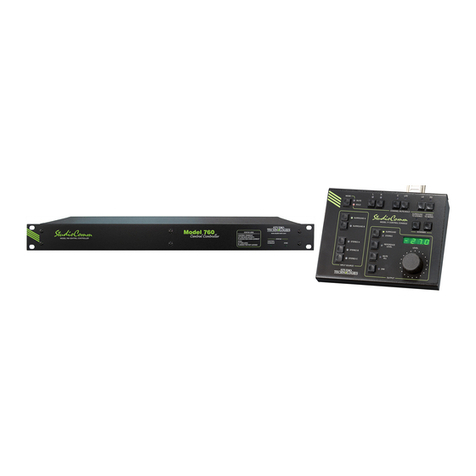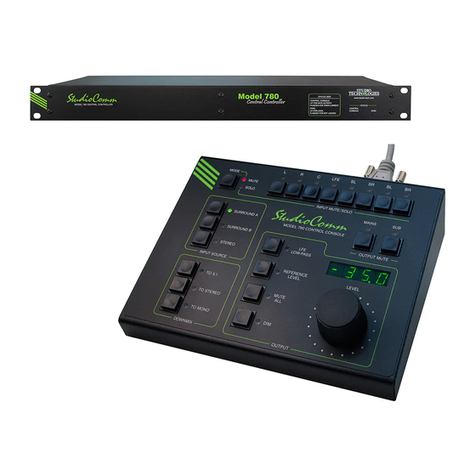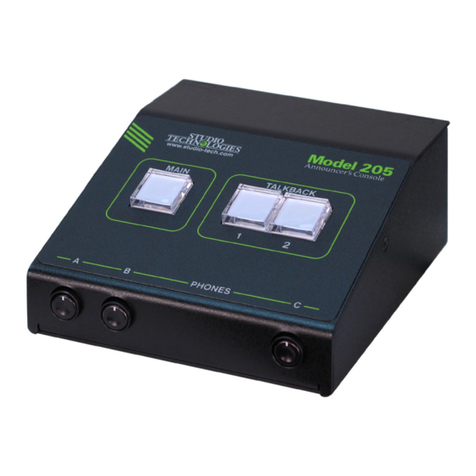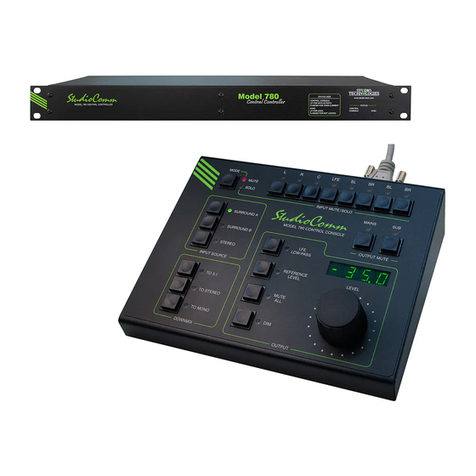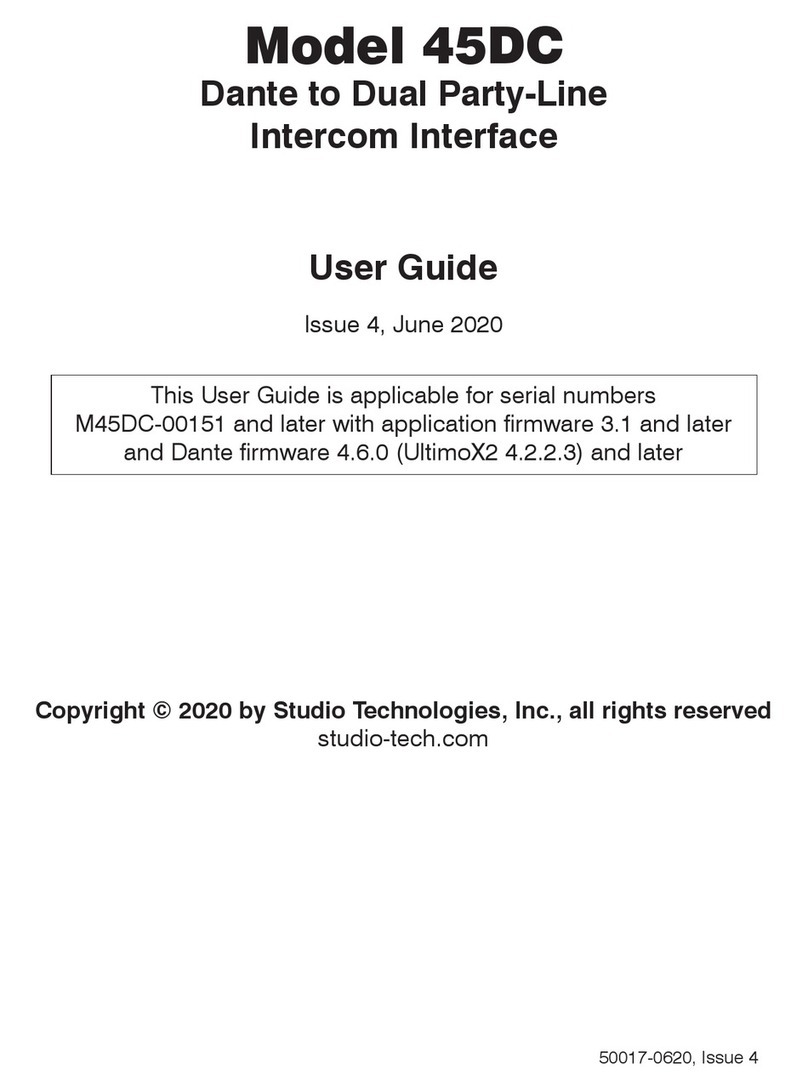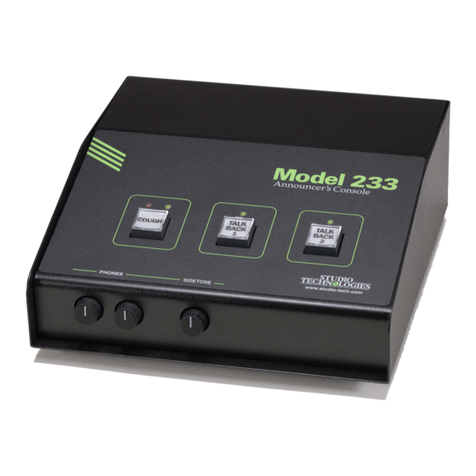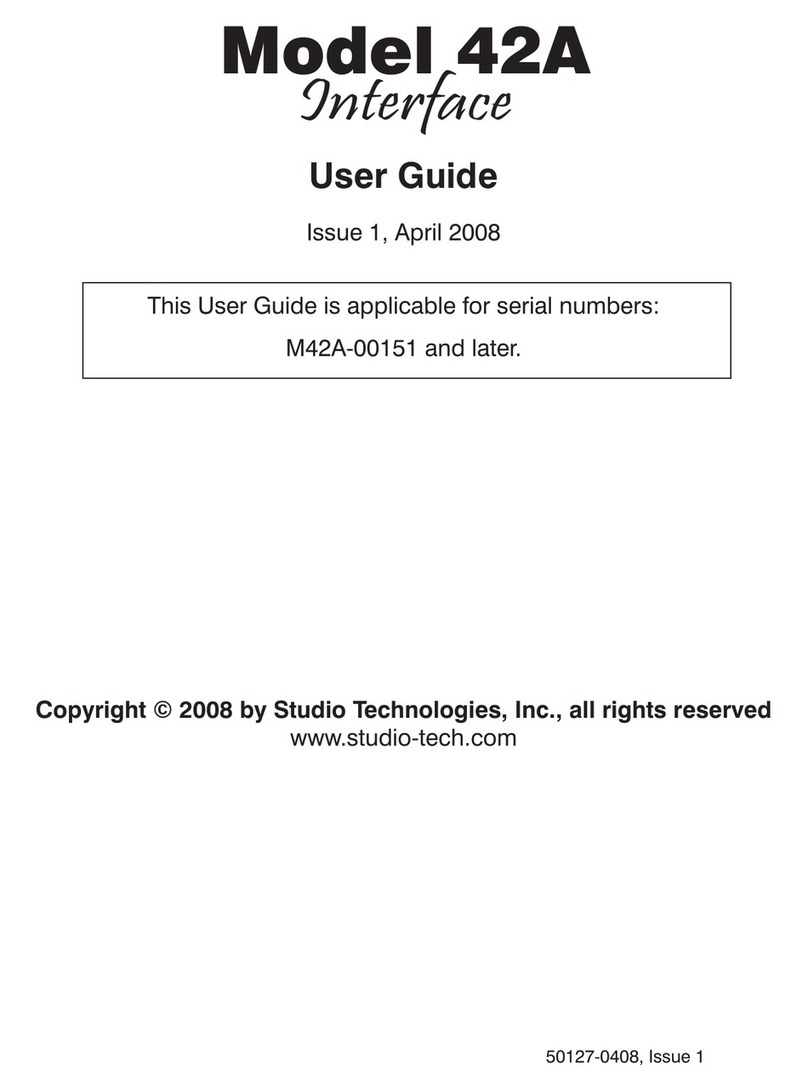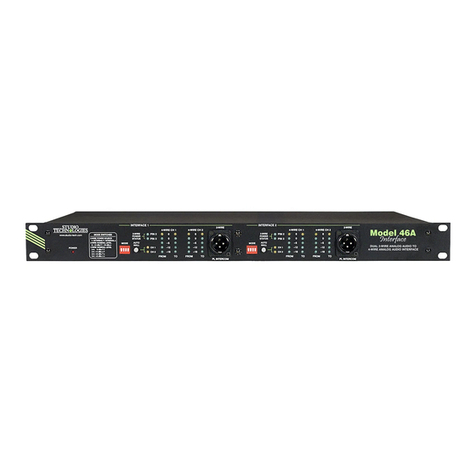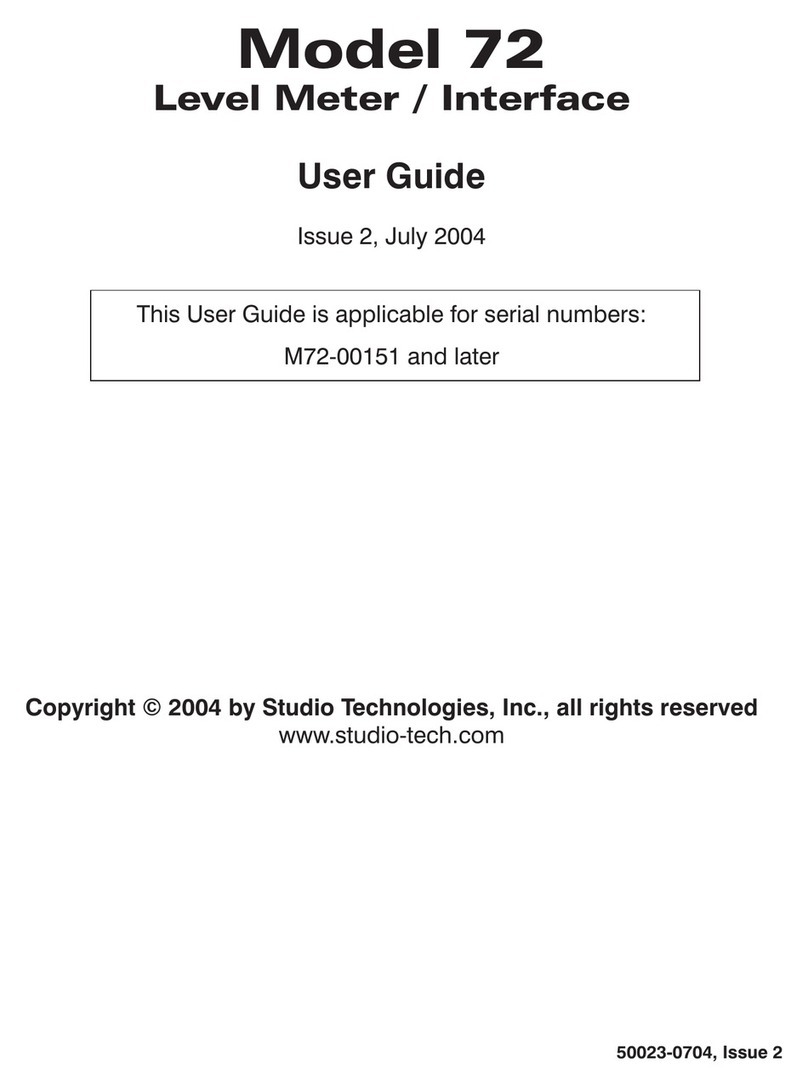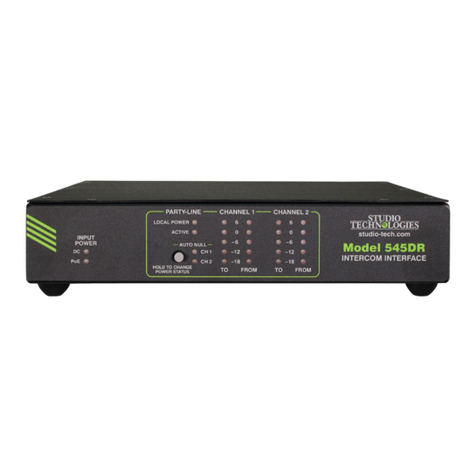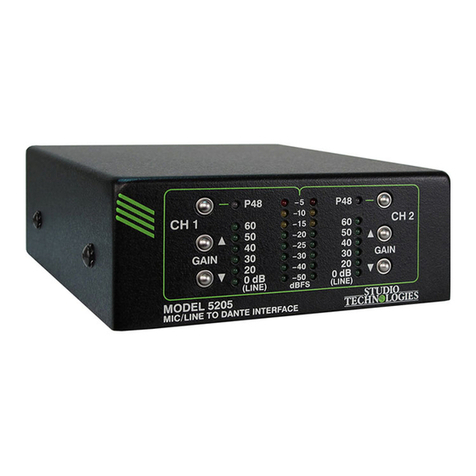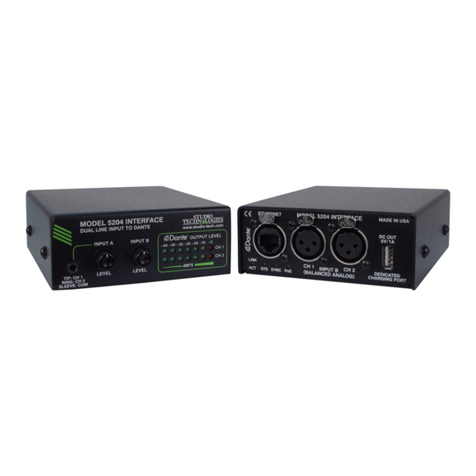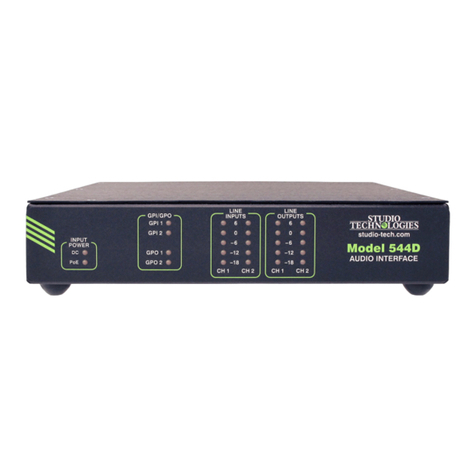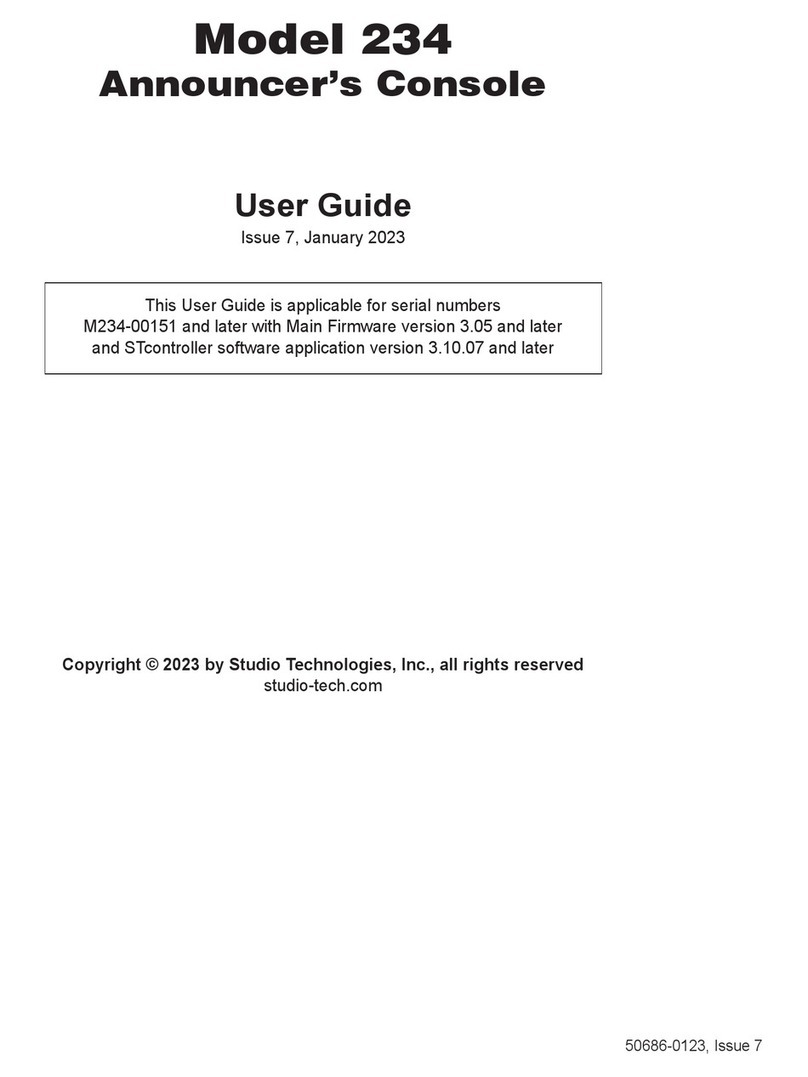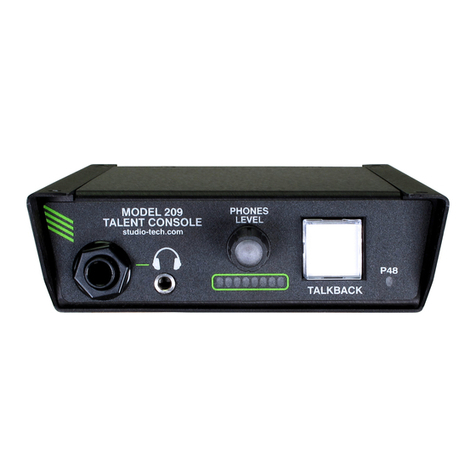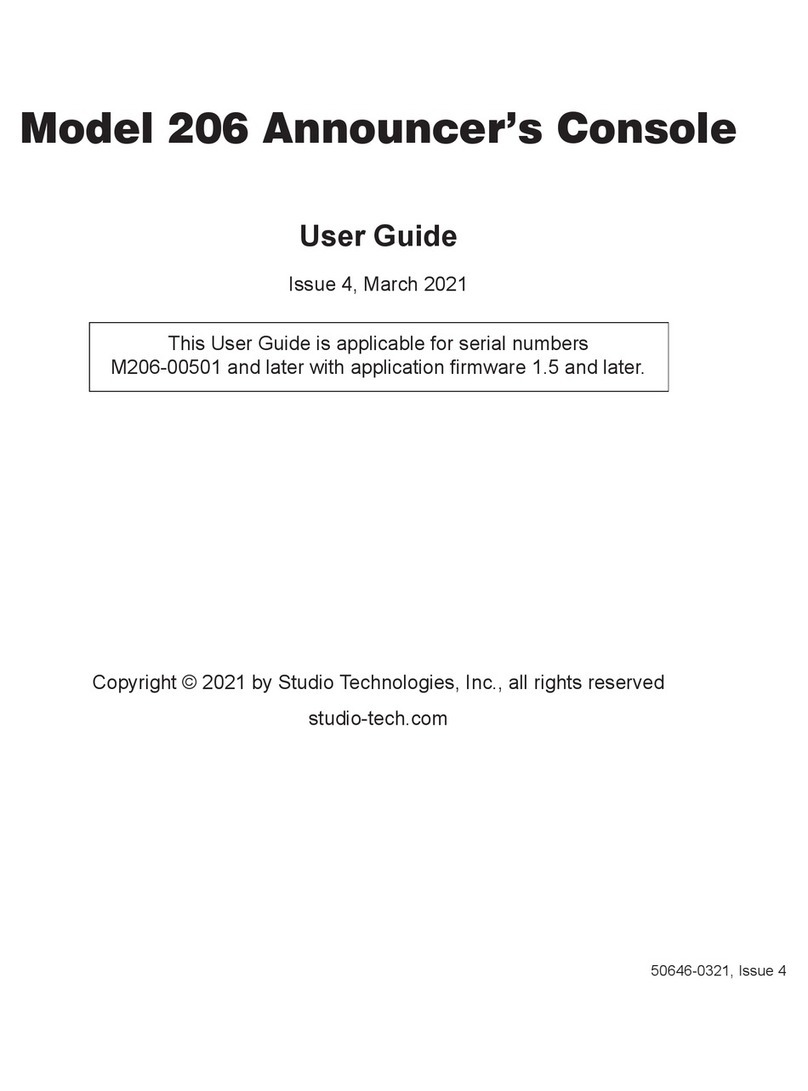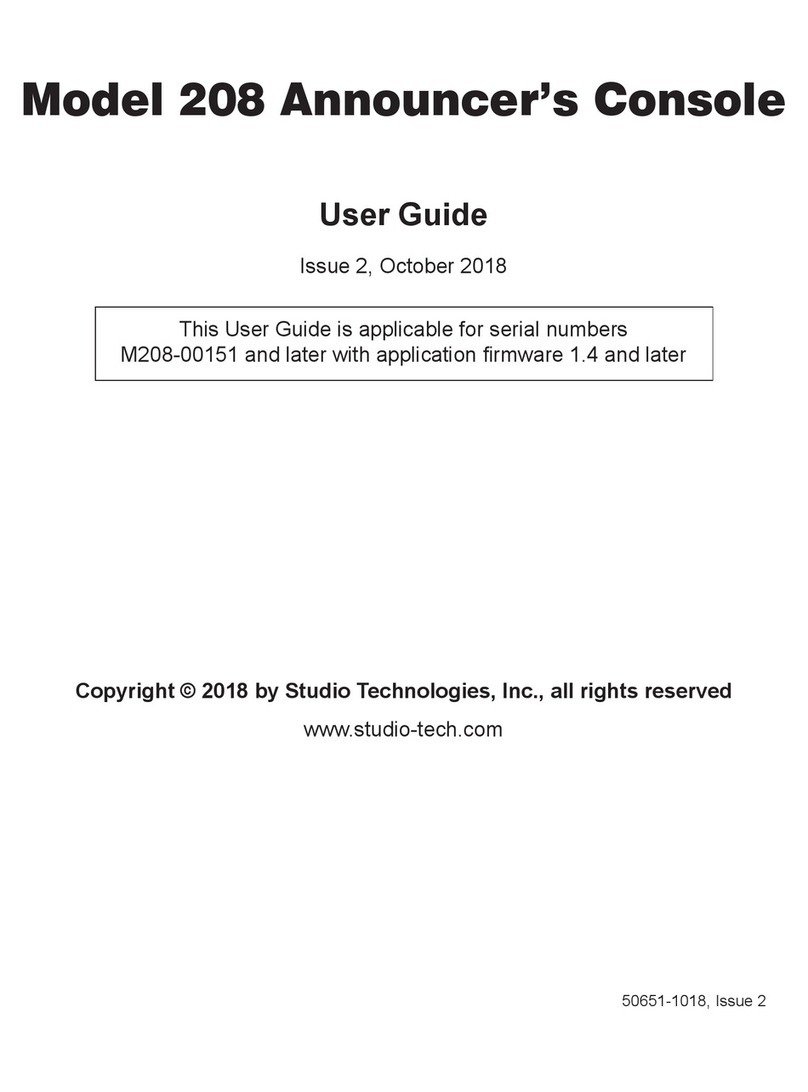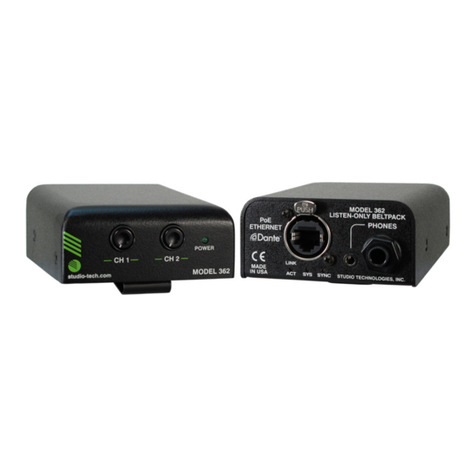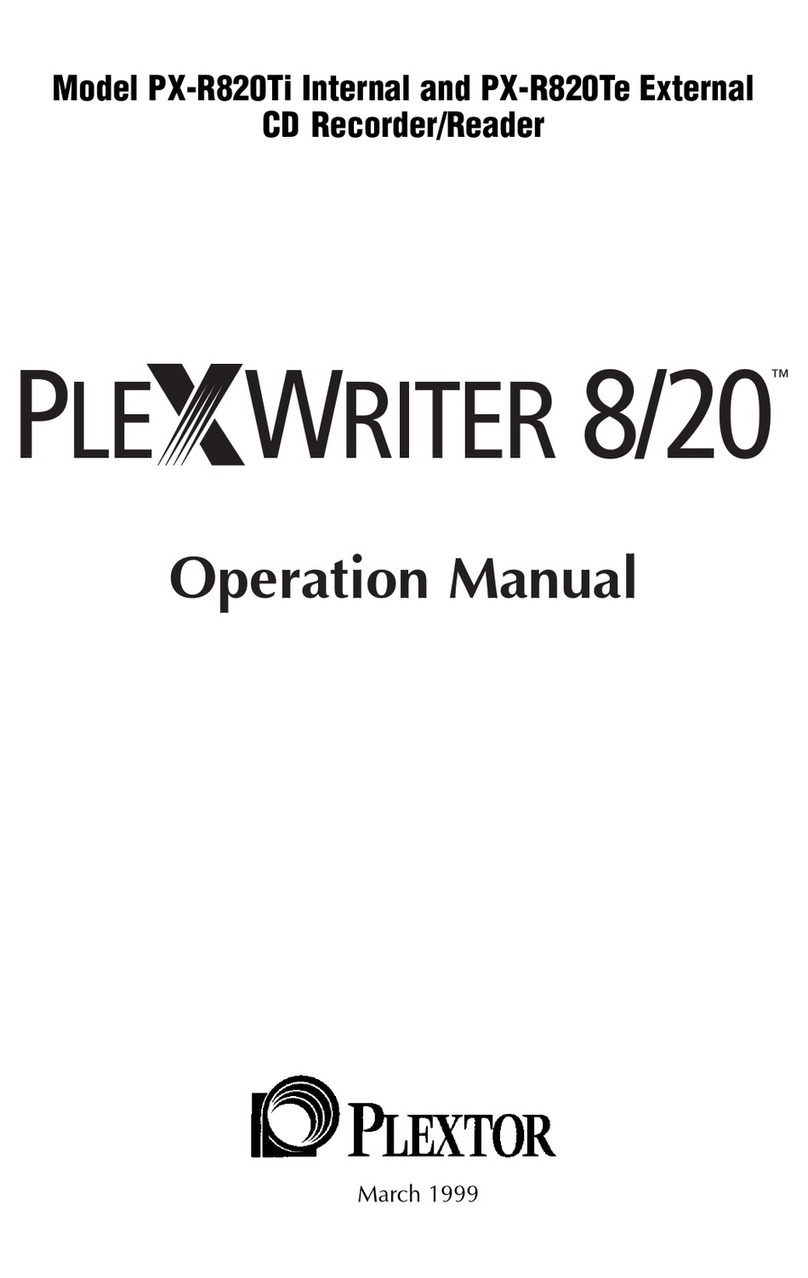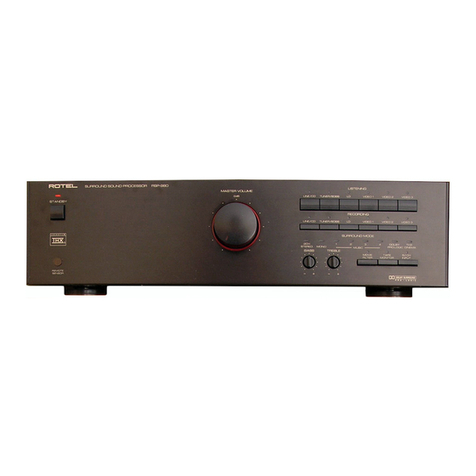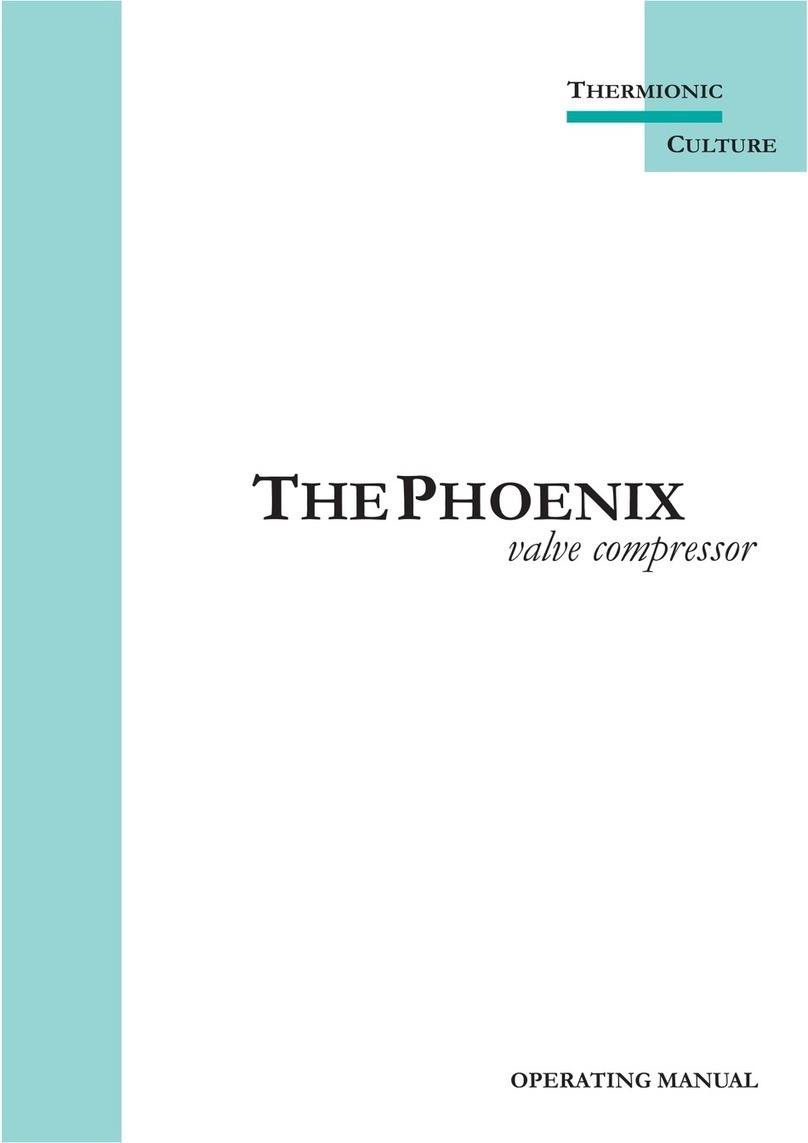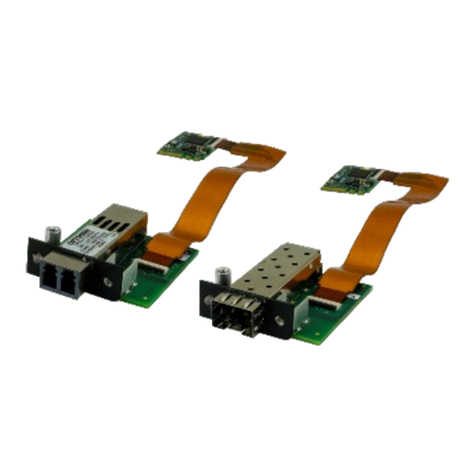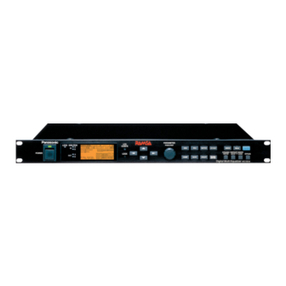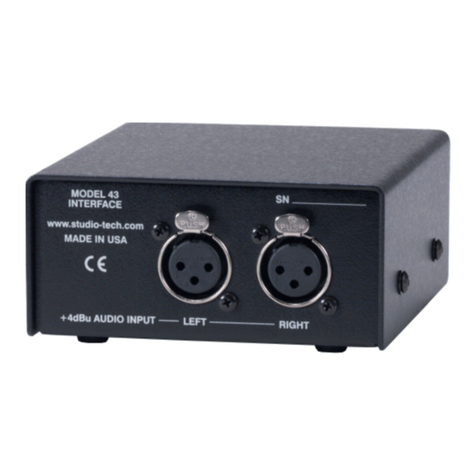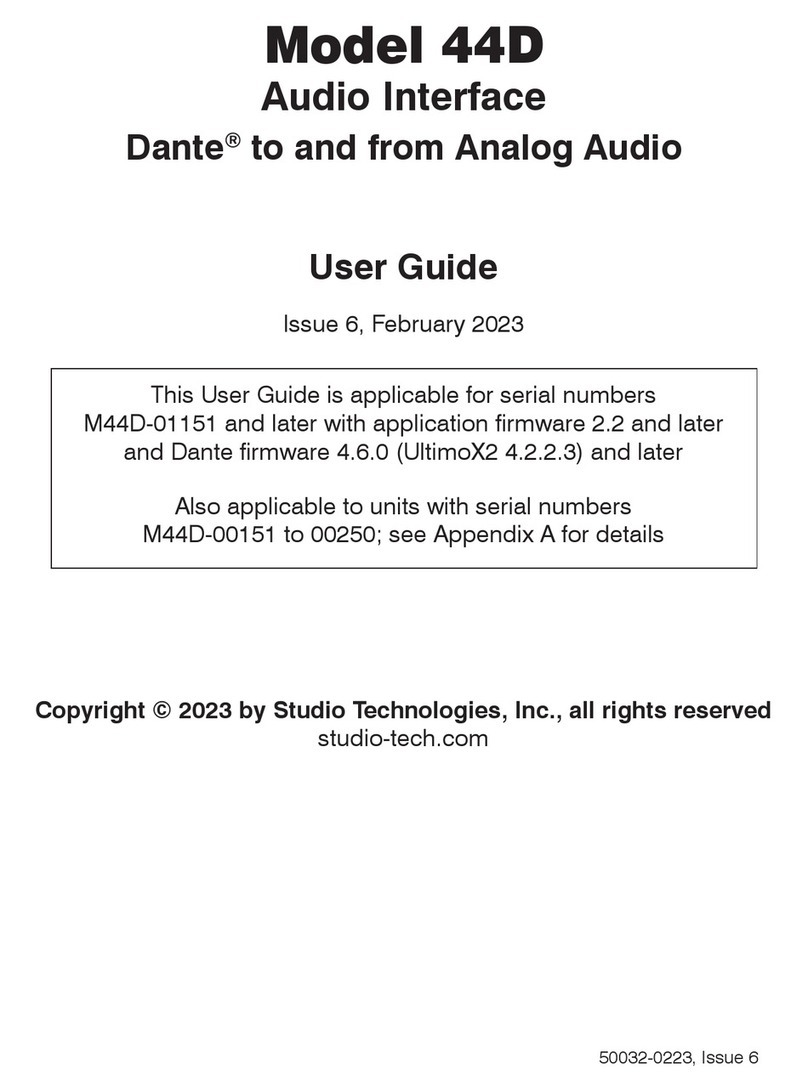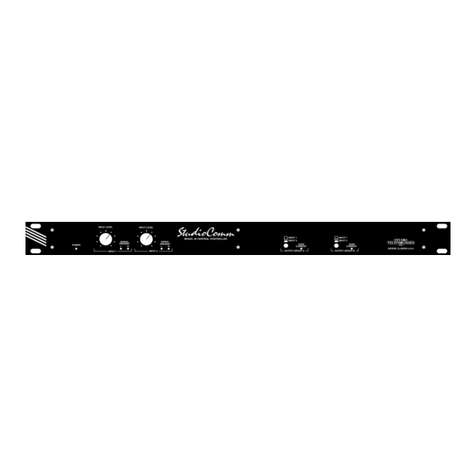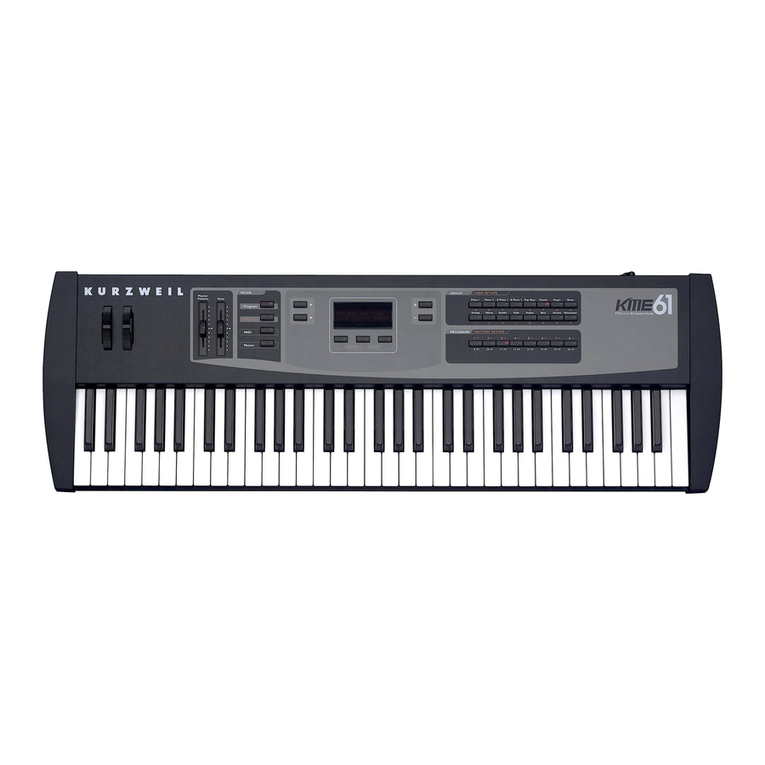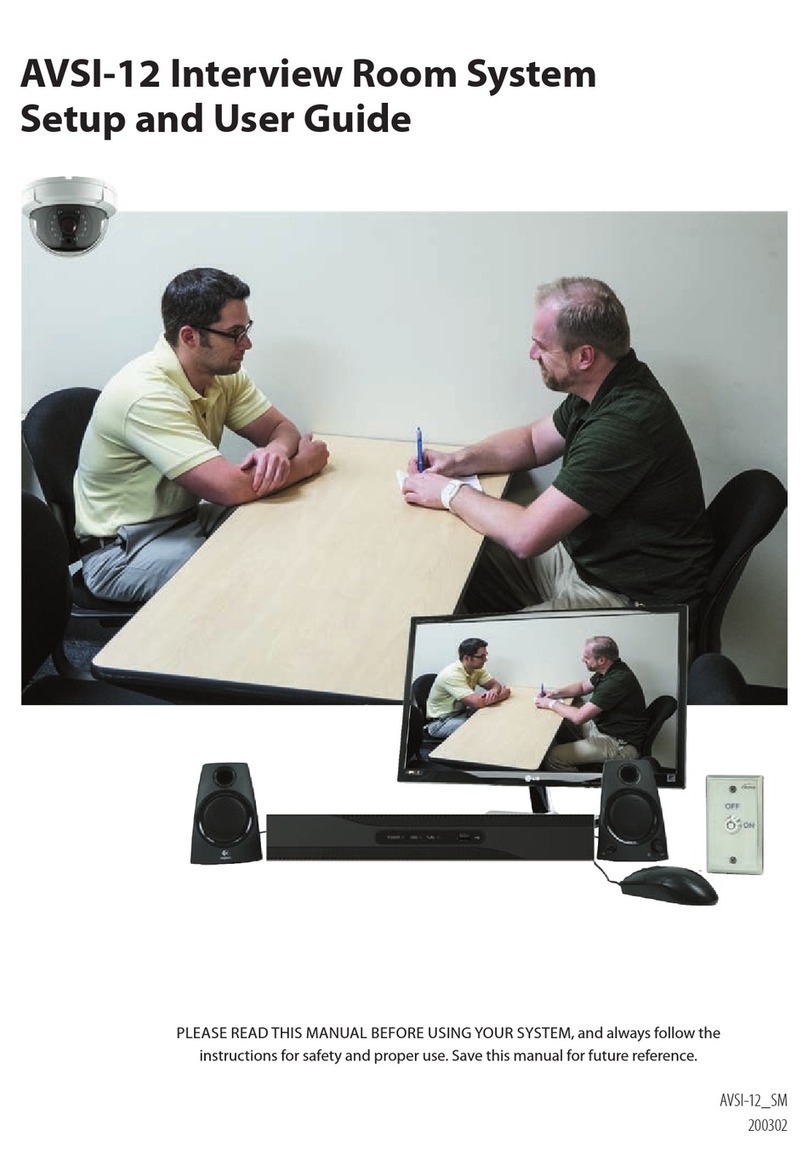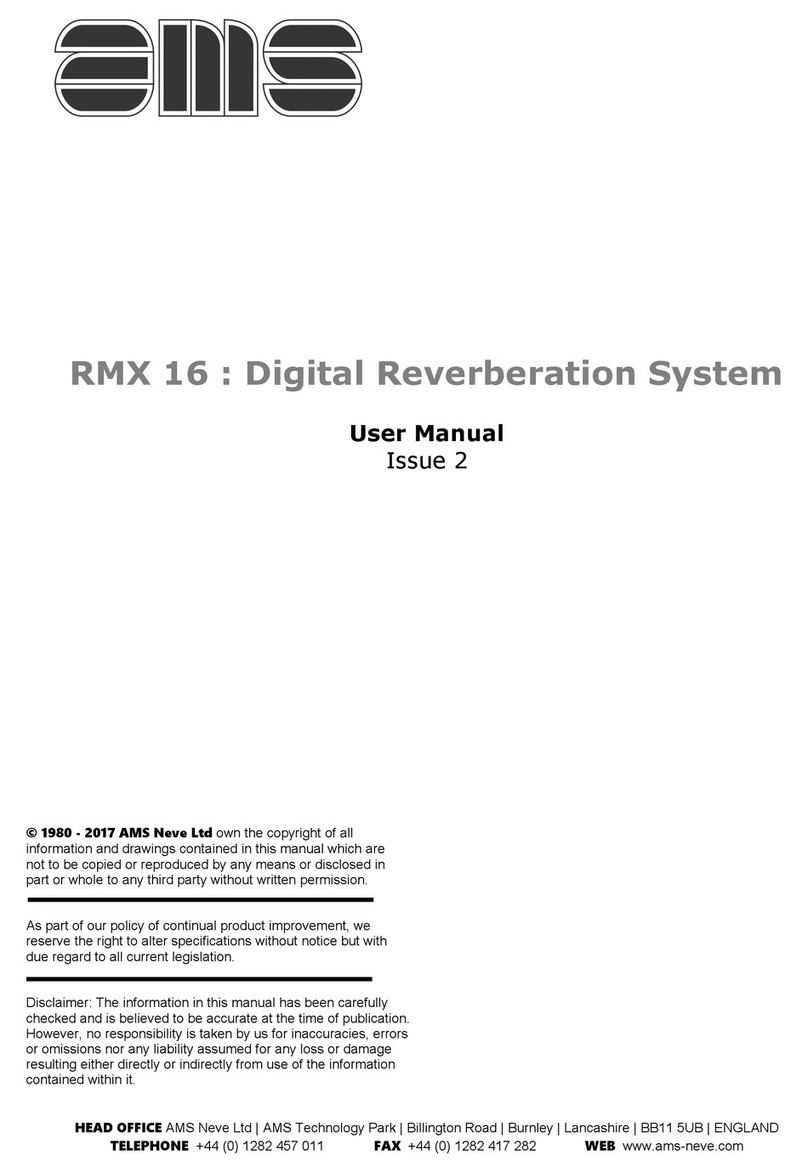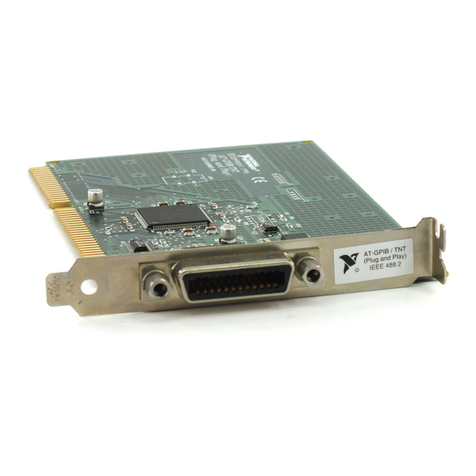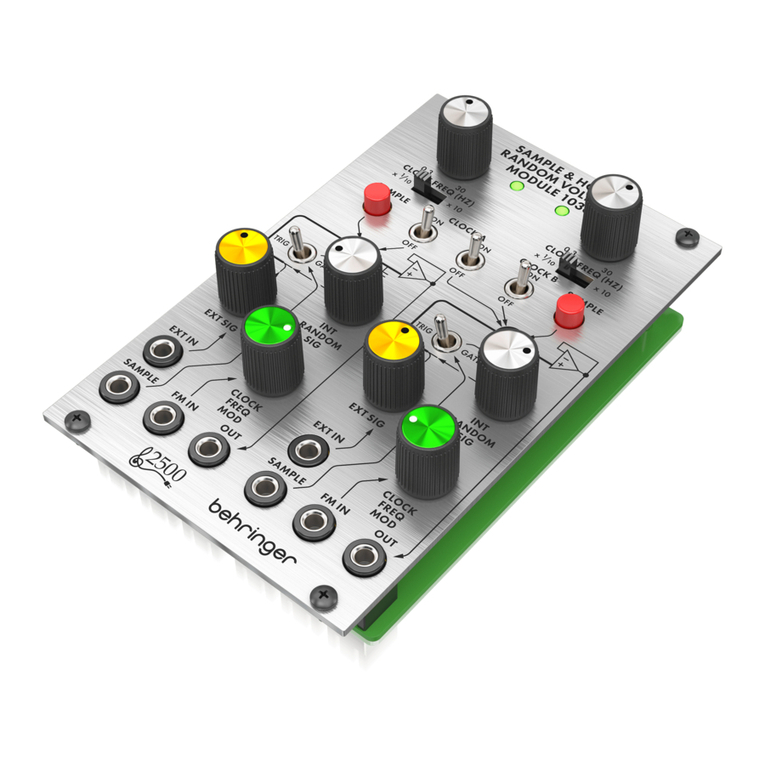
Issue Preliminary 1, April 2023 Model 354A User Guide
Page 10 Studio Technologies, Inc.
Model 354A
TALK STATION
The Model 354A’s analog monitor output is line-level,
electronically balanced, and capacitor coupled. It can
correctly interface with balanced or unbalanced loads
of 2 k (2000) ohms or greater. A conguration setting
in the STcontroller application is used to select how
the analog monitor output will function from among
three operating modes. In the Adjustable (Post-
Fader) mode the level of the analog monitor output will
depend on the setting of the front-panel level control.
(“Post” indicates that the monitor output will obtain its
audio source after (“post”) the level control; a level
control is also known in the audio world as a “fader.”)
When selected for the Fixed –10 (Pre-Fader) mode,
the analog monitor output will have a xed nominal
output level of –10 dBu. In this mode, the nominal
output level has been optimized to match the input
sensitivity typically found on amplified loudspeak-
ers. Since most amplied loudspeakers contain an
integrated level control, the analog monitor output’s
signal is “pre-fader,” that is with no interaction from the
Model 354A’s level control. In the Fixed 0 (Pre-Fader)
mode the monitor output has a xed nominal output
level of 0 dBu. This can be useful as a “professional”
line-level output for connection with audio routers,
intercom systems, audio transport equipment, or a
local monitoring system. In both of the xed modes,
the level control on the front of the Model 354A will
not impact the level of the monitor output. (The audio
signal is presented to the analog monitor output cir-
cuitry before (“pre”) the level control.)
An interface cable prepared for connection to the
analog monitor output should use a 3-pin female XLR
connector that is wired such that pin 2 is connected
as signal + (high), pin 3 as signal – (low), and pin 1
as common/shield. To connect to an unbalanced input
use XLR pin 2 as signal + (high) and pin 1 as low/
shield. Pin 3 should be left unconnected. To clarify,
for correct unbalanced operation it is important not
to connect pin 3 to anything; do not connect pins 1
and 3 together.
Dante Conguration
For audio to pass to and from the Model 354A requires
conguration of several Dante-related parameters.
These configuration settings are stored in non-
volatile memory within the Model 354A’s circuit-
ry. Dante parameter configuration will typically be
done with the Dante Controller software application
which is available for download free of charge at
audinate.com. Versions of Dante Controller are avail-
able to support the Windows
®
and macOS
®
operating
systems.
The Model 354A’s Dante interface is compatible with
the Dante Domain Manager (DDM) software applica-
tion. Refer to the DDM documentation, also available
from Audinate, for details on which Model 354A and
related parameters may need to be congured.
Audio Routing
The Model 354A has four transmitter (output) and four
receiver (input) channels that are associated with the
unit’s Dante interface. The transmitter (output) chan-
nels must be subscribed (routed) to the desired Dante
receiver (input) channels. This achieves routing of the
Model 354A’s audio output channels to the device (or
devices) that will be “listening” to them. In addition,
the unit’s four Dante receiver (input) channels can be
subscribed (routed) with the devices that supply the
desired Dante transmitter (output) channels. These
four audio input channels can provide the monitor, tal-
ent cue (IFB program or non-interrupt), or background
music signals needed for a specic application. Note
that within Dante Controller a “subscription” is the term
used for routing a transmitter ow (a group of up to
four output channels) to a receiver ow (a group of
input channels).
In advanced applications, the Model 354A’s four
Dante receiver (input) channels can provide “keep
alive” signals that impact operation of the unit’s four
Dante transmitter (output) channels. Together they
can work with a digital processor unit to create a
complete end-to-end solution.
As previously noted, the Model 354A uses an
UltimoX4 integrated circuit to implement its Dante
functionality. The number of ows associated with this
integrated circuit is four; two transmitter (output) and
two receiver (input). (A ow can be unicast, multicast,
or a combination of the two.) With this small number
of ows it’s possible that a ow limitation condition
could occur. If the Model 354A’s Dante transmitter
(output) channels need to be subscribed (routed) to
more than two ows (typically two choices) it’s pos-
sible that an intermediary device, such as the Studio
Technologies’ Model 5422A Dante Intercom Audio
Engine, can be used to “repeat” the signals and gain
many additional ows.




















